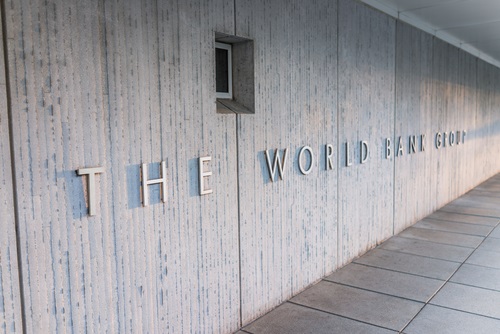Alberta
Watch: Provincial Review Panel tees off on Supervised Consumption Sites

From The Province of Alberta
Impact of supervised consumption sites report released
The final report of the expert-led Supervised Consumption Services Review Committee is now available online.
The Supervised Consumption Services Review Committee listened to more than 19,000 Albertans’ concerns about the impacts supervised consumption services (SCS) sites are having on their homes, businesses and neighbourhoods.
The final report contains the committee’s findings regarding needle debris, social disorder, public safety and other concerns. The committee found serious problems with supervised consumption services as they are currently being operated, and provided thoughtful considerations for improving services and community safety, while building a comprehensive recovery-oriented system of care that offers the greatest chance to lift vulnerable Albertans with addiction out of their current plight.
“This report is a wake-up call for Alberta. Every one of us deserves to feel safe in our communities, and every Albertan struggling with addiction should be able to access the supports they need. We will consider this report, and all other relevant evidence, as we develop a comprehensive, long-term approach that works. That means improving addiction treatment services and supports to create a full continuum of care across the province.”
“Crime grows in areas where illegal drug use is on the rise. Our government supports a firm justice system that includes investigating, disrupting and dismantling the organized crime groups that supply and sell illegal drugs that fuel addiction, ruin people’s lives and take a terrible toll on our communities. We’ll continue to ensure law enforcement and the justice system have the tools and resources to protect community safety.
“Thank you to all Albertans who participated in this process. Our committee was given a mandate to hear from people across the province on all sides of this important issue. The findings in this report demonstrate the compassion many Albertans feel for their neighbours and their commitment to creating safe, welcoming communities for everyone.”
“Our committee heard from thousands of passionate Albertans, and reviewed a wide range of data and evidence sources to examine what impact these services are having on the communities around them. The findings may be difficult for some to hear, but are vital to improving the health and well-being of those who use the sites and those who live in surrounding neighbourhoods.”
Key findings from the report include:
- Increased needle debris and deteriorating public safety around the sites were significant concerns raised during the town halls, through the surveys and in stakeholder meetings.
- While there were no deaths recorded among people at the SCS sites, death rates in the immediate vicinity of the sites after the sites opened continued to increase along with province-wide rates of opioid deaths.
- Opioid-related calls for emergency medical services also increased in the immediate vicinity following the opening of the sites.
- Many people indicated they felt less safe in the areas surrounding the SCS sites after they opened.
- Lack of focus on referrals to detoxification and treatment resources.
- Inconsistent and often inaccurate classification of “overdose reversals.”
- Substantial increases in the use of non-opioid substance use, specifically methamphetamines, leading to aggressive behaviour endangering public safety.
Over the coming months, the government will consider changes to supervised consumption services and other addiction treatment and recovery resources, on a city-by-city basis.
Quick facts
- The eight-member committee included First Nations people, experts in addiction and recovery, harm reduction, mental health, trauma, pain management, law enforcement, crime reduction and justice, as well as people with lived experience.
- 16,831 individuals and 440 businesses submitted feedback to the committee through an online survey.
- About 1,800 people attended the town halls in Edmonton, Red Deer, Calgary, Lethbridge, Medicine Hat and Grande Prairie.
- More than 500 first responders and more than 50 stakeholder groups provided evidence and shared concerns with the committee.
Alberta
Early Success: 33 Nurse Practitioners already working independently across Alberta

Nurse practitioners expand primary care access |
The Alberta government’s Nurse Practitioner Primary Care program is showing early signs of success, with 33 nurse practitioners already practising independently in communities across the province.
Alberta’s government is committed to strengthening Alberta’s primary health care system, recognizing that innovative approaches are essential to improving access. To further this commitment, the Nurse Practitioner Primary Care Program was launched in April, allowing nurse practitioners to practise comprehensive patient care autonomously, either by operating their own practices or working independently within existing primary care settings.
Since being announced, the program has garnered a promising response. A total of 67 applications have been submitted, with 56 approved. Of those, 33 nurse practitioners are now practising autonomously in communities throughout Alberta, including in rural locations such as Beaverlodge, Coaldale, Cold Lake, Consort, Morley, Picture Butte, Three Hills, Two Hills, Vegreville and Vermilion.
“I am thrilled about the interest in this program, as nurse practitioners are a key part of the solution to provide Albertans with greater access to the primary health care services they need.”
To participate in the program, nurse practitioners are required to commit to providing a set number of hours of medically necessary primary care services, maintain a panel size of at least 900 patients, offer after-hours access on weekends, evenings or holidays, and accept walk-in appointments until a panel size reaches 900 patients.
With 33 nurse practitioners practising independently, about 30,000 more Albertans will have access to the primary health care they need. Once the remaining 23 approved applicants begin practising, primary health care access will expand to almost 21,000 more Albertans.
“Enabling nurse practitioners to practise independently is great news for rural Alberta. This is one more way our government is ensuring communities will have access to the care they need, closer to home.”
“Nurse practitioners are highly skilled health care professionals and an invaluable part of our health care system. The Nurse Practitioner Primary Care Program is the right step to ensuring all Albertans can receive care where and when they need it.”
“The NPAA wishes to thank the Alberta government for recognizing the vital role NPs play in the health care system. Nurse practitioners have long advocated to operate their own practices and are ready to meet the growing health care needs of Albertans. This initiative will ensure that more people receive the timely and comprehensive care they deserve.”
The Nurse Practitioner Primary Care program not only expands access to primary care services across the province but also enables nurse practitioners to practise to their full scope, providing another vital access point for Albertans to receive timely, high-quality care when and where they need it most.
Quick facts
- Through the Nurse Practitioner Primary Care Program, nurse practitioners receive about 80 per cent of the compensation that fee-for-service family physicians earn for providing comprehensive primary care.
- Compensation for nurse practitioners is determined based on panel size (the number of patients under their care) and the number of patient care hours provided.
- Nurse practitioners have completed graduate studies and are regulated by the College of Registered Nurses of Alberta.
- For the second consecutive year, a record number of registrants renewed their permits with the College of Registered Nurses of Alberta (CRNA) to continue practising nursing in Alberta.
- There were more than 44,798 registrants and a 15 per cent increase in nurse practitioners.
- Data from the Nurse Practitioner Primary Care Program show:
- Nine applicants plan to work on First Nations reserves or Metis Settlements.
- Parts of the province where nurse practitioners are practising: Calgary (12), Edmonton (five), central (six), north (three) and south (seven).
- Participating nurse practitioners who practise in eligible communities for the Rural, Remote and Northern Program will be provided funding as an incentive to practise in rural or remote areas.
- Participating nurse practitioners are also eligible for the Panel Management Support Program, which helps offset costs for physicians and nurse practitioners to provide comprehensive care as their patient panels grow.
Related information
Alberta
Province considering new Red Deer River reservoir east of Red Deer

Central Alberta reservoir study underway
Alberta’s government is moving forward a study to assess the feasibility of building a new reservoir on the Red Deer River to help support growing communities.
Demand for water from communities and businesses is increasing as more families, businesses and industries choose to live and work in central Alberta. The Red Deer River supplies water to hundreds of thousands of Albertans across the region and expanding water storage capacity could help reduce the risk of future droughts and meet the growing water demands.
Alberta’s government has now begun assessing the feasibility of building a potential new reservoir east of Red Deer near Ardley. A two-phase, multi-year study will explore the costs and value of constructing and operating the reservoir, and its impact on downstream communities, farmers and ranchers, and businesses.
“Central Alberta is a growing and thriving, and we are ensuring that it has the water it needs. This study will help us determine if an Ardley reservoir is effective and how it can be built and operated successfully to help us manage and maximize water storage for years to come.”
Reservoirs play a vital role in irrigation, drought management, water security and flood protection. Budget 2024 allocated $4.5 million to explore creating a new reservoir on the Red Deer River, at a damsite about 40 kilometres east of the City of Red Deer.
Work will begin on the scoping phase of the study as soon as possible. This will include reviewing available geotechnical and hydrotechnical information and exploring conceptual dam options. The scoping phase also includes meetings with municipalities and water users in the area to hear their views. This work is expected to be completed by December 2025.
“Reliable water infrastructure is essential for Alberta’s growing communities and industries. The Ardley reservoir feasibility study is a vital step toward ensuring long-term water security for central Alberta. As we assess this project’s potential, we’re supporting the sustainability of our economic corridors, agricultural operations and rural economy.”
“Water is essential to the agriculture industry and if the past few years are any indication, we need to prepare for dry conditions. A potential dam near Ardley could enhance water security and help farmers and ranchers continue to thrive in Alberta’s unpredictable conditions.”
Once that is complete, the feasibility study will then shift into a second phase, looking more closely at whether an effective new dam near Ardley can be safely designed and constructed, and the impact it may have on communities and the environment. Geotechnical and hydrotechnical investigations, cost-benefit analyses and an assessment of environmental and regulatory requirements will occur. The feasibility phase will also include gathering feedback directly from Albertans through public engagement. This work is expected to be completed by March 31, 2026.
Quick facts
- The Ardley dam scoping and feasibility study will be undertaken by Hatch Ltd., a Canadian multi-disciplinary professional services firm.
- Once the feasibility study is complete, government will assess the results and determine whether to pursue this project and proceed with detailed engineering and design work and regulatory approvals.
- Alberta’s government owns and operates several large reservoirs in the South Saskatchewan River Basin that help ensure sufficient water supply to meet demand from communities, irrigators and businesses, while also maintaining a healthy aquatic environment.
- Water stored at Gleniffer Lake, the reservoir created by Dickson Dam, helps supplement low winter flows along the Red Deer River and helps ensure an adequate water supply for Red Deer and Drumheller.
Related information
-

 Business1 day ago
Business1 day agoCarbon tax bureaucracy costs taxpayers $800 million
-

 Brownstone Institute1 day ago
Brownstone Institute1 day agoThe Most Devastating Report So Far
-

 ESG1 day ago
ESG1 day agoCan’t afford Rent? Groceries for your kids? Trudeau says suck it up and pay the tax!
-

 Daily Caller1 day ago
Daily Caller1 day agoLos Angeles Passes ‘Sanctuary City’ Ordinance In Wake Of Trump’s Deportation Plan
-

 John Stossel23 hours ago
John Stossel23 hours agoGreen Energy Needs Minerals, Yet America Blocks New Mines
-

 COVID-192 days ago
COVID-192 days agoDr. McCullough praises RFK Jr., urges him to pull COVID shots from the market
-

 Business2 days ago
Business2 days agoOttawa’s avalanche of spending hasn’t helped First Nations
-

 MAiD2 days ago
MAiD2 days agoOver 40% of people euthanized in Ontario lived in poorest parts of the province: government data





